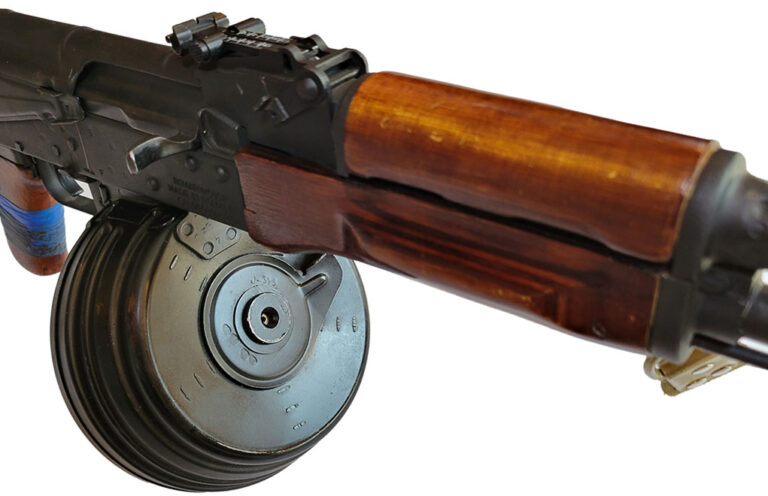
A look back at drum magazines, their pros and cons and why they’ve fallen out of favor for professional and military use.
Drum magazines, those big, round mags that store cartridges in a spiral rather than in a flat stack, have been around for longer than you might realize. While once a relatively common sight in the hands of soldiers around the world, the drum magazine has since largely fallen out of favor with militaries and armed professionals.
There are a few that remain popular on the civilian market for several different platforms (because more bullets is always better when fun is the priority), but drum magazines are now rare compared to box magazines and belt-fed weapons in professional and military settings.

So, let’s talk about drum magazine history, how they work and what you should know before trying to assemble a full kit based around several Magpul D-60s.
A Brief History Of Drum Magazines
The first device that could be considered a drum magazine was designed in the 1850s (patented in 1853 by Charles N. Tyler) as a loading mechanism for revolvers, with the ramrod pushing a paper cartridge from a drum into the cylinder., While noteworthy, and an interesting invention, it’s not quite what we think of when people refer to drum magazines today.
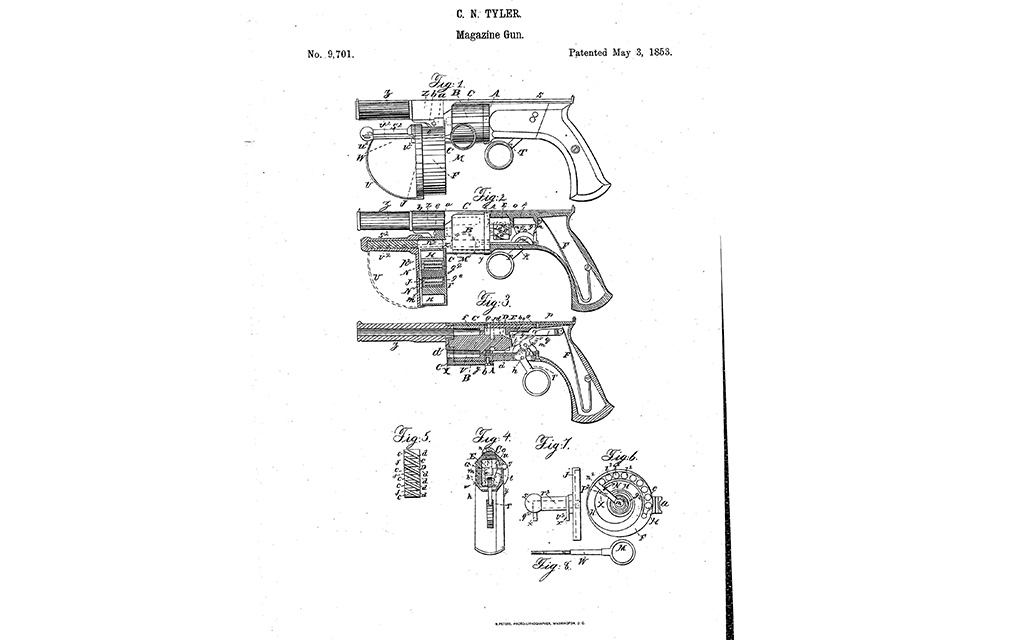
The first truly modern drum magazine emerged in the early 1900s with the 32-round “snail magazine” (Schneckenmagazine) for the Luger P08. Typically issued with the longer-barreled, shoulder stock-equipped Artillery Luger, these saw combat during WWI.
Officially called the LP08 (Lange Pistole, for the 7.9-inch barrel), it saw some service with artillery crews, the Luftwaffe and occasionally with some infantry units, but these primordial pistol-caliber carbines otherwise saw limited use. However, the drum magazine itself was also used by the MP 18 submachine gun at the end of World War I and again in World War II.
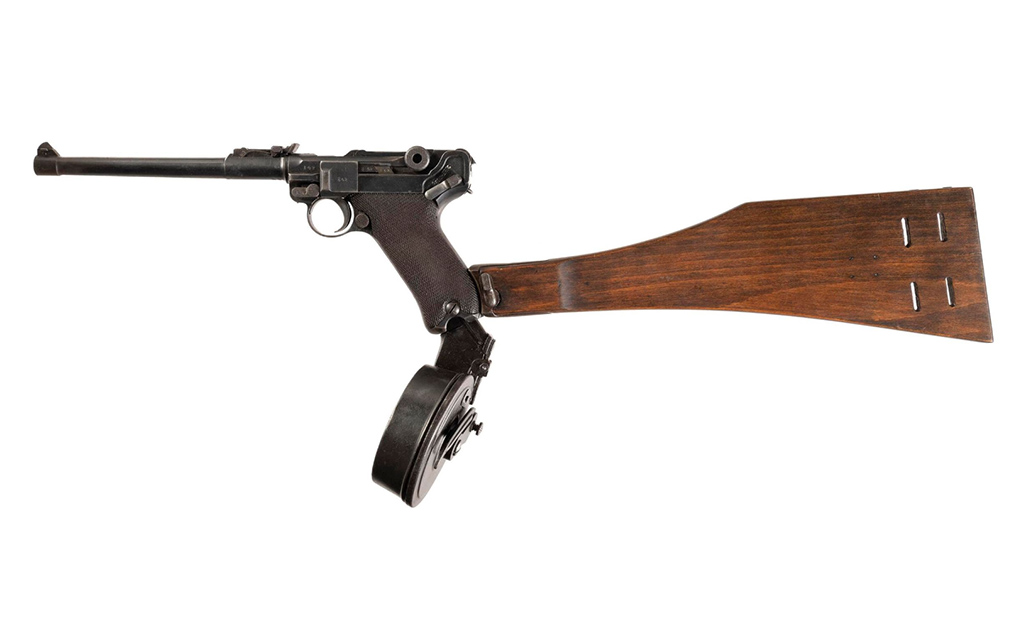
The most common use of drum magazines from that point forward was with submachine guns, although they’d be developed for rifles and machine guns as well.
The Soviet PPSh-41, the Finnish Suomi and the Thompson are some prominent SMG examples. The Thompson was originally designed to use either a 20-round box magazine or a 50-round drum magazine, though 100-round drums would eventually be made as well.
Outside of submachine guns, even historically, the use of drum magazines has been more limited. Some early machine gun designs such as the Lewis Gun and the Degtyaryov used a variation of the concept known as pan magazines. In the 1960s, drums got another boost of life when the Soviets developed and started widely issuing them with the RPK (the light machine gun version of the AK).
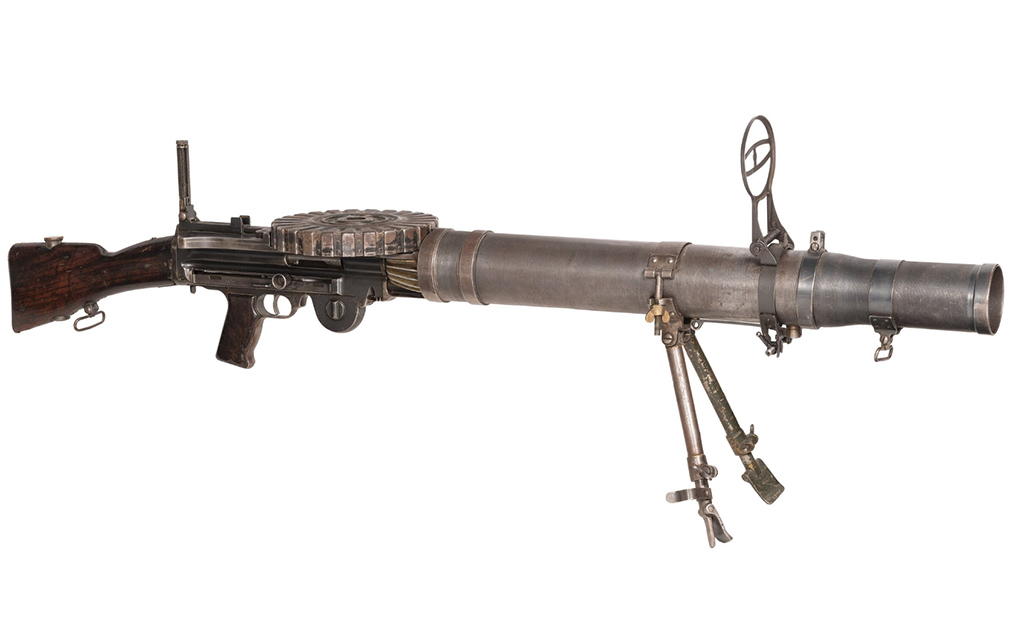
Past the RPK, the development of new drum magazines became a rarer and rarer sight. The Soviets didn’t even issue a new version of it for the RPK-74 after switching to 5.45×39, opting for larger box magazines instead (although a new 5.45 drum mag was developed in 2016 for the RPK-16, it’s yet to be widely issued). As it stands today, when it comes to the firearms used by modern militaries and armed professionals, box mags and belt-feds have firmly secured their place as the global standard.
How Does A Drum Magazine Work?
There are a few different designs of drum magazines, but in almost all cases the basic mechanical principles remain the same.
Rather than being stacked next to each other in rows of either one, two or more as what happens in traditional box magazines, in a drum magazine, ammunition is instead coiled in a spiral inside the mag’s body.
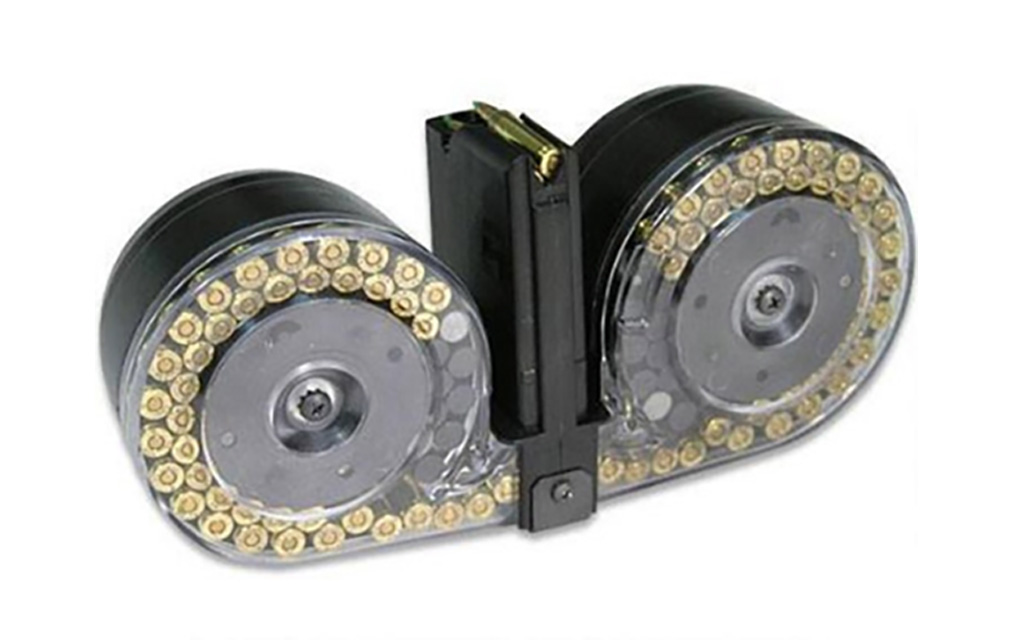
To load, the magazine is (usually, but not always) disassembled, and the ammunition can be individually placed into their proper positions. The magazine is then reassembled and the user winds the spring until set to the desired tension for proper feeding. Again, some of the more modern designs can be loaded like a normal magazine without disassembling or winding.
When firing, the spring tension pushes on the follower to feed ammunition towards where it can feed into the firearm, just like a normal magazine.
Some drum magazines have a feed tower like a conventional box magazine but others do not.
The aforementioned pan magazine variant essentially functions the same way except for the orientation of the bullets (the rounds face the center of a pan magazine rather than being parallel with the firearm’s action). This difference is why guns that use pan magazines can typically only use pan magazines, whereas most guns that use traditional drum magazines can also use box magazines since both designs feed rounds in the same direction.

Why The Military Doesn’t Use Drum Magazines
Militaries generally don’t use drum magazines anymore for two main reasons:
- They’ve historically proven to be less reliable than traditional box magazines or belt-feed systems
- They actually decrease the total ammunition loadout that an individual soldier can carry.
Consider this for a moment.
The PMAG D-60 (Magpul’s 60-round 5.56 drum magazine for ARs) is 7.4 inches tall and about 4 inches wide at its thickest point. Fully loaded, it weighs roughly 46 ounces.
One Gen 3 PMAG, more or less the gold standard for AR-15 magazines, is 7.5 inches tall, 3.1 inches front to back and just under an inch wide. Fully loaded, they weigh about 16 ounces.
One D-60 occupies the space of three 30-round PMAGs and weighs about the same to boot. In terms of the total amount of ammunition compared to the space the mag takes up, the D-60 provides 60 rounds for the price of 90. That may not matter for plinking at the range, but if you have to carry your own supply of ammunition, that makes a huge difference. And that doesn’t even take into account the awkward shape of drum magazines that prevent them from easily being stored in pouches.

Even though Magpul’s drum magazine is relatively new in the grand scheme of things, this problem isn’t.
Thompson 50-round drum mags occupy more space than three 20-round box magazines. While Thompson drums were issued by the U.S. Army and the U.S. Marine Corps in the 1920s and 30s (including some action in the Banana Wars, among other limited engagements of the period) they were not widely issued in World War II and only saw limited use in the early years. Instead, as the Thompson was refined into the M1 and M1A1 models, the Army removed the ability of the guns to accept drum mags at all.
Another common complaint regarding drum mags was the noise they made in the field. Unlike box magazines, where cartridges are mostly held tightly in place by the spring tension, cartridges are held much more loosely in a drum. When you walk, they rattle.
Further, while most of the commonly used drum magazines of the 20th century were reliable enough, they were never as reliable as the tried-and-true box mag.
Mechanically speaking, pushing something in a straight line is easy. Pushing bullets in a spiral is not as easy. This simple principle will always prevent the best drum mags from being as reliable as the best box magazines.
Failures to feed have classically been the biggest issue plaguing drum magazines, along with the additional requirements for maintenance, loading and so on. It’s just easier to deal with box magazines, and they tend to work a heck of a lot better, especially on the scale that militaries operate on.
So, while some very good drum mags have been designed and used to great effect over the past century of warfare, the lesson learned seems to be that their downsides outweigh their benefits enough for the concept to be mostly abandoned. If sustained fire is your goal, belt-feds are a much better solution.
Pros And Cons Of Drum Mags
While the pros and cons of drum mags are the same for both militaries and individual recreational shooters on the surface, the context for their use completely changes things. When your life isn’t on the line, a minor hit to potential reliability is acceptable. When you don’t need to haul your own gear for miles, weight and bulk are irrelevant. When shooting is your hobby, cleaning and maintaining a more complicated device isn’t the end of the world. Point being, a drum mag can still be an excellent thing to have on hand for today’s modern shooter.
For plinking at the range or participating in the appropriate competitions, there are some well-made modern drum mags available for ARs of various calibers, 10/22s and PCCs. Most of these are generally considered to be reliable, and when working properly they could definitely save you a reload and some seconds when on the clock.
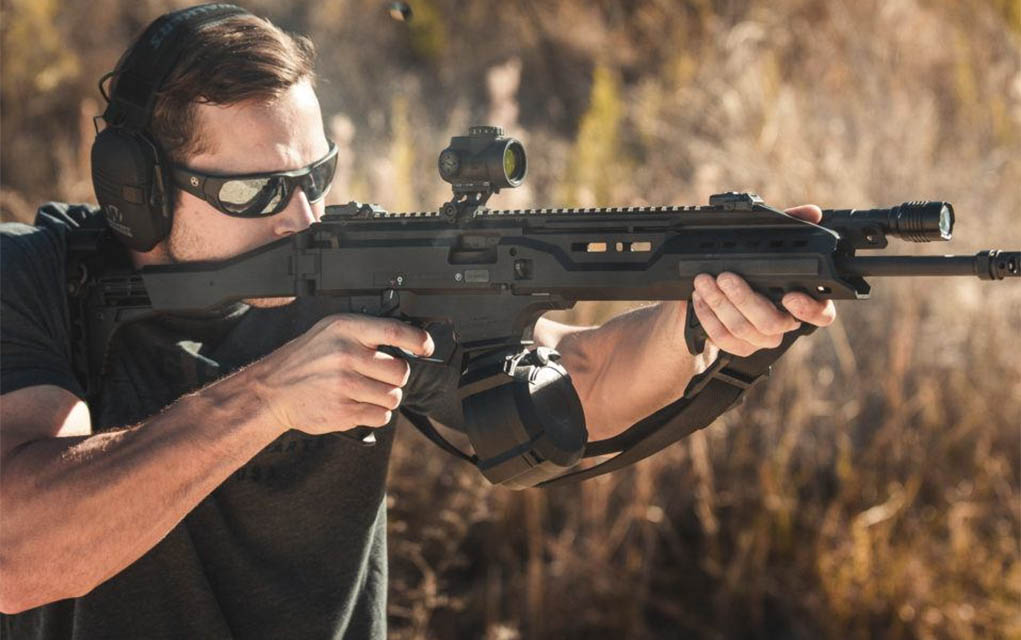
For AKs, military surplus drums are considered the best quality, especially top-loaders from Russia or Romania. The commercial reproductions from China are usually more finicky, but even they can run well enough for range fun.
If you have an old-school AR-15, a Beta C-Mag can also be an excellent complement to enhance its retro vibes. Most other relatively common guns in question that can accept a drum mag are either original historical firearms or reproductions, such as the Thompson. If you own something like that, you might as well pick up a drum mag too just to complete the package.

Historically, a common trend of civilian firearms is that they take inspiration from what the military is using. In the case of drum mags, it’s generally a good idea to follow suit. Given the number of guns equipped with drum mags that were developed and used in the past 100 years, nobody can say that the concept didn’t get a fair shake. They were tried, saw some success, but ultimately didn’t offer any benefit great enough for them to live on in a world of box mags and belt-feds. If you’re considering buying one for practical purposes, especially relating to defense, you’ll be better off with a box mag. Even extended models will be more reliable than a drum.
If plinking, LARPing, collecting or competing is your aim, however, drum mags can still be very fun. Plus, if nothing else, their existence helps to ensure that 30 rounds is the definition of standard capacity.
More On Mags & Clips:

Next Step: Get your FREE Printable Target Pack
Enhance your shooting precision with our 62 MOA Targets, perfect for rifles and handguns. Crafted in collaboration with Storm Tactical for accuracy and versatility.
Subscribe to the Gun Digest email newsletter and get your downloadable target pack sent straight to your inbox. Stay updated with the latest firearms info in the industry.
